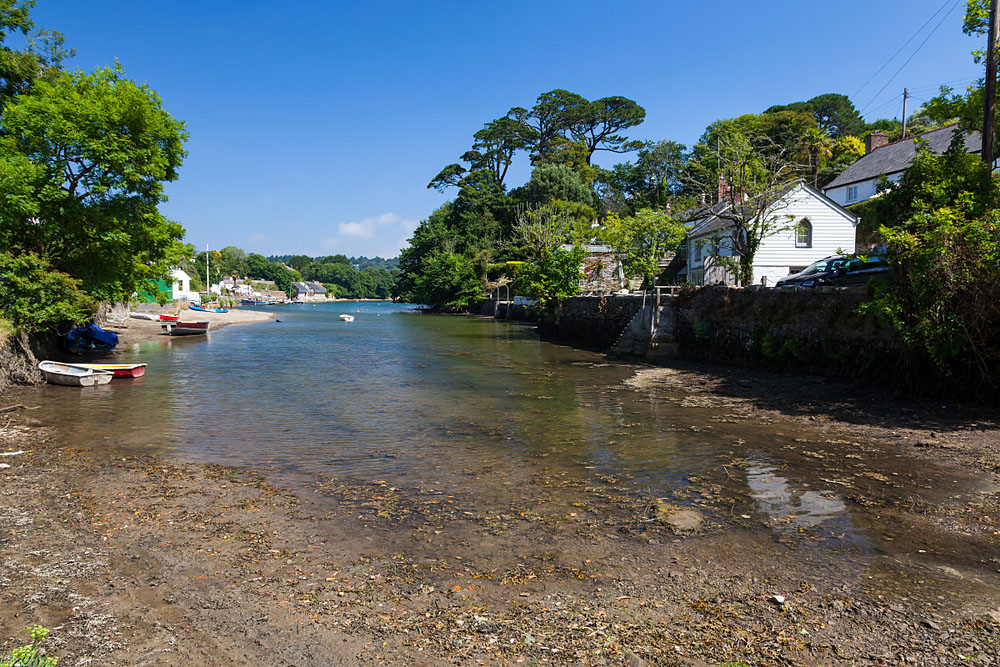




The Lizard Peninsula Tour
It is thought that the name Lizard actually comes from the Cornish word “lysardh” which literally means “high court” but could also be interpreted as “fortress” given the high cliffs of the peninsula. A Lizard Tour will generally look like this:
Frenchman’s Creek
This stunning emerald-watered inlet was made famous by Daphne Du Maurier’s classic novel of the same name. It’s not hard to see why she was so inspired to write about this hidden part of the Helford River.
Helford Village
Helford was once an important port. This is difficult to believe today, as you’ll see when we approach the sleepy little place on the banks of the Helford River. Trading ships once brought French rum, tobacco and lace from the continent and the duty was collected at the old custom house. During the Napoleonic Wars, pirates and free traders populated the reaches of the river.
Porthallow
Situated between St Keverne on the Lizard and the Helford River, Porthallow is a small village whose pub’s name, The Five Pilchards, indicates the traditional occupation of its inhabitants. The old pilchard cellars can still be seen near the beach. It is also the halfway point of the Southwest Coast path meaning that hikers have walked 315 miles from the start point.
Terence Coventry Sculpture Park
This unusual little sculpture park is about 10 minutes walk to the south of Coverack, contained in three small meadows astride the old coast path. There are usually about 25 monumental sculptures on display and the views are incredible.
Goonhilly Satellite Earth Station
We then move onto to Goonhilly Downs in the centre of the Peninsula. Some say the Downs look like the African Savannah in certain light! Here we can see Goonhilly Satellite Earth Station which is a large radio-communication site. It was at one time the largest satellite earth station in the world, with more than 25 communications dishes in use and over 60 in total.
Kynance Cove
With its glorious white sand, beautiful scenic views, and secluded south facing aspect, Kynance Cove is considered one of the best beaches in Britain. The child-friendly beach is perfect for family beach holidays, and with ample parking in close proximity to the cove, it’s easily accessible.
Cadgwith
This village is everybody’s idea of an archetypal fishing village with its tight cluster thatched cottages lining the sides of the valley and the small fleet of colourful fishing boats winched up on the shingle beach.
Lizard Point
Next we visit the most southerly point in Great Britain. It is famous for the local serpentine stone, a unique metamorphic rock which is dark green veined with red and white. The point has a lighthouse, and old lifeboat house and a couple of fantastic cafes. If you’re lucky, you’ll see seals bobbing about in the waves and an elusive Cornish Cough surfing the air by the cliffs.
Mullion Cove
On the west coast of the Lizard Peninsula is a small sandy beach, mostly covered at high tide, beside the historic lifeboat station and picturesque Mullion harbour. There is a great cave to explore at low tide where waves often crash through from the seaward entrance. If you come at high tide in the summer months, you will often see the local children harbour-jumping here.
Church Cove
If we move further up the coast, we find Church Cove Beach at Gunwalloe, which is a sheltered, south west-facing cove and is home to one of the more curiously-sited of Cornwall’s old churches, the church of St Winwaloe (St Wynwallow). Located at the northern end of the beach, the church is separated from the sea only by the rocky hump of Castle Mound, whilst its detached bell tower is actually dug into the cliff side.
More recently, Church Cove and adjoining Dollar Cove have been made famous by regular appearances in Poldark.
Porthleven
Porthleven is a town, civil parish and fishing port near Helston in Cornwall. It is the most southerly port on the island of Great Britain and was originally developed as a harbour of refuge, when this part of the Cornish coastline was recognised as a black spot for wrecks in the days of sail.
Wheal Prosper
I then take you over to Rinsey and Wheal Prosper. This mine was opened in 1860 and produced mainly tin but definitely did not live up to its name and closed in 1866. The engine house is constructed of slate from quarries on the clifftops nearby and was used for pumping water out of the mine. Due to the crumbly nature of slate, the engine house is strengthened with granite blocks along the edges (known as quoins) which act as pillars to hold the weight of the tall structure.
Prices
£425 per day for 2 passengers (+£50 per extra passenger). Price includes everything apart from food and drink and entrance to attractions. For larger groups please email for price and availability.
Book Now